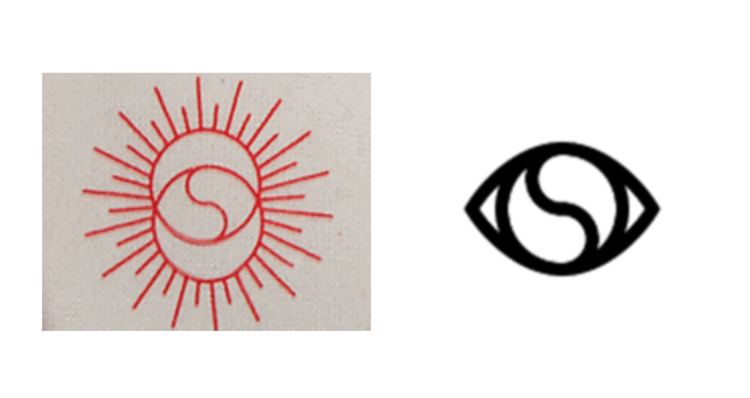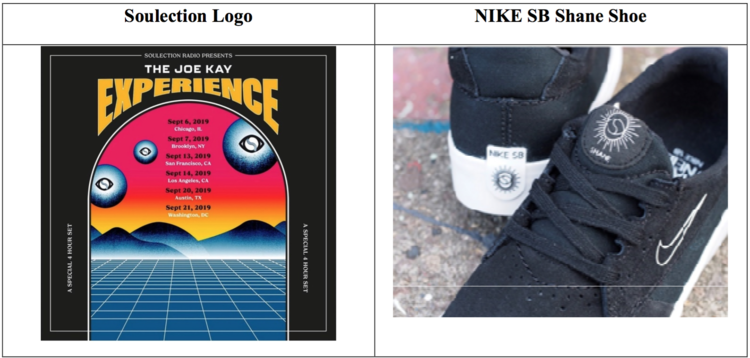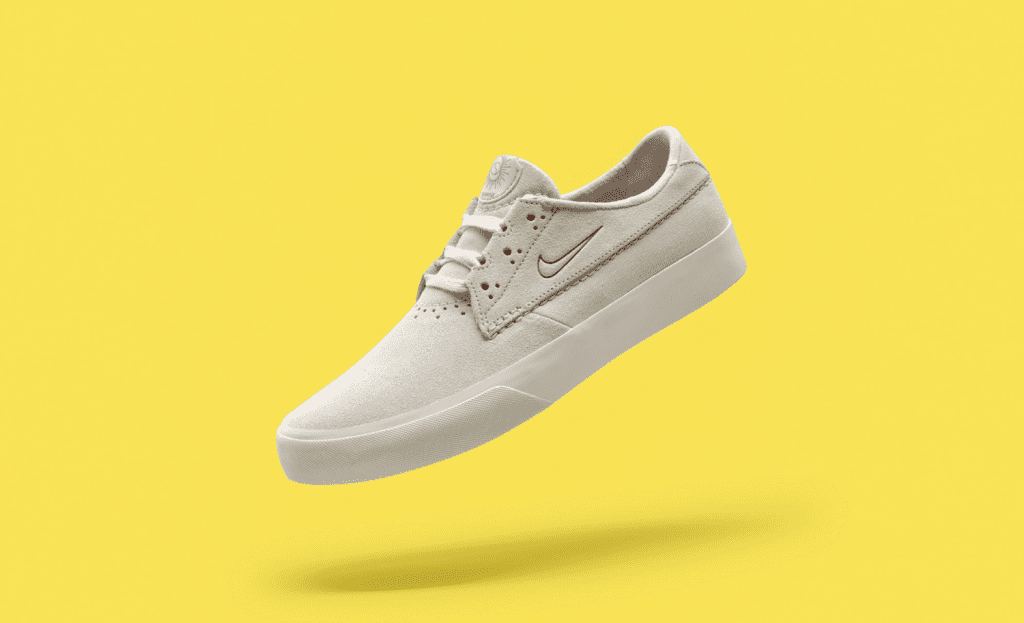Early this year, Nike announced a new release coming from its skateboarding division. The impending drop would see the sportswear giant, which launched Nike SB in 2002 in the midst of rapid growth in the skate market, team up with longtime Nike-sponsored skateboarder Shane O’Neill to debut a signature shoe, one that Nike has since revealed was born from a “months-long iterative process” between the Aussie skateboarder and Nike’s design team, and meant to evoke O’Neill’s “style and his lifelong passion for skateboarding.”
The new release has not been without at least one snag: claims that the Beaverton, Oregon-based company is running afoul of the law as a result of the personalized graphic that appears on the sneaker. Just days after new NIKE SB Shane Shoe launched on February 1, Nike received a letter from a digital music and technology startup called Soulection, which accused Nike of infringing one of its federally-registered trademarks by slapping a similar graphic on the Shane sneaker. In a strongly-worded cease and desist letter that it sent to Nike’s counsel, Soulection says that Nike’s use of lookalike logo demonstrates its “undoubted attempt to evoke Soulection.” With such similarity in mind, Soulection demanded, among other things, that Nike pull the shoes and pay up.
Instead of playing into Soulection’s demands or attempting to “work out [their] differences outside of the litigation content,” which Nike’s counsel says that it “typically tries” to do, Nike did something else entirely: it filed a strongly-worded lawsuit against the company, a move that its counsel says was prompted by “the weakness of Soulection’s claims coupled with [its] unreasonable ultimatums.”
Nike is seemingly unamused by the “legally unsound claims” that Soulection made in its cease and desist letter, as well as its “unreasonable demands [and] threats of imminent litigation based on a legally meritless position.” So, in a smack-down of a complaint filed in a federal court in Los Angeles this past week, Nike characterizes the music entity “an opportunistic party [that has] wrongfully [accused it] of engaging in ‘blatant and willful’ trademark infringement,” and asserts that in reality, it “has done nothing wrong,” and as a result, has asked the court to issue “a prompt judicial declaration of its rights so that it can put Soulection and its threats behind it.”

Nike’s SB Shane Shoe graphic (left) & Soulection’s trademark (right)
Among other things, Nike takes issue with Los Angeles-based Soulection’s claim that it has engaged in trademark infringement, asserting that “nothing could be further from the truth,” and that merely looking at “the two logos as they actually appear in the marketplace in connection with [the two parties’] disparate goods and services demonstrates the weakness of Soulection’s position.”
For one thing, Nike claims that Soulection’s trademark infringement claim – which requires a showing that consumers are likely to confuse the source of the two companies’ products as a result of the defendant’s use of a “lookalike” logo – is weak on the confusion front because it and Soulection make and sell completely different products/services: Soulection “does not manufacture or sell athletic shoes, let alone skateboard shoes.” And it asserts that Soulection’s claim “that it operates a ‘popular clothing line’ … appears to be false.”
More than that, Nike says that even if Soulection did sell clothing, the two companies “goods and services [are sold] through disparate distribution and retail channels, and target different consumers with minimal, if any, overlap,” which further reduces any chance of consumers confusing them and their respective offerings. With such “clear distinctions between the parties’ logos, goods and services, and marketing channels [in mind],” and given “Nike’s utter lack of intent to confuse consumers, Soulection’s infringement claim will fail.”
One of the most interesting points that Nike makes in its complaint, however, centers on the 18 pages of social media screenshots that Soulection included with its cease and desist letter, which consists of screenshots of consumers pointing out the similarity between Soulection’s logo and the graphic on Nike’s SB Shane Shoe. Despite these social media call-outs, Nike claims that it “is not aware of any confusion in the purchasing context whereby consumers believe that there exists an affiliation between NIKE and Soulection as a result of NIKE’s use of the Sun Shane graphic.”

image via complaint
According to Nike, “The social media trolling annexed to [Soulection’s cease and desist letter] is neither relevant nor reliable evidence [of] confusion.” In terms of “the proper [standard]” for determining likelihood of confusion, Nike says that is “whether consumers purchasing the NIKE SB Shane Shoe hold the mistaken belief that it is somehow affiliated with or sponsored by Soulection,” and that is not what is established in the majority of the social media comments, such as ones that state that “Clearly this is Soulection’s logo” or that Nike “straight stole [Soulection’s] logo without its consent.”
Nike is essentially arguing that it does not matter that consumers are linking its brand (as a result of the graphic on SB Shane Shoe) and Soulection because most of the comments, as a whole, do not actually demonstrate confusion. While there are, in fact, comments inquiring as to whether the Nike sneaker “[is] a Soulection collab,” which could be used to establish confusion (assuming the comments are “reliable”), most of them recognize that even if there are similarities between the two companies’ graphics, the SB Shane Shoe is a Nike product, not a Soulection one or one that Soulection is otherwise affiliated with.
Instead of expressing confusion, most of the commenters take issue with Nike allegedly using a logo that looks like Soulection’s for a shoe of its own, one that was produced without Soulection’s involvement – hence, the claims of “stealing.”
That is significant, as it shows that the majority of commenters are not confused; they are angry that Nike took an allegedly similar logo from Soulection without involving Soulection (i.e., “Damn, yall really just ripped the Soulection logo like that”). And that arguably bodes really well for Nike because from an infringement perspective, confusion is the core element in a trademark infringement matter, not consumer anger – even if such anger is bad look from a public relations perspective.
On a broader note, this proves a compelling argument on Nike’s part given that so many companies have taken to routinely using social media comments linking one brand to another as evidence of potential confusion.
*The case is Nike, Inc. v. Soulection LLC, 2:20-cv-01643 (C.D.Cal.).











